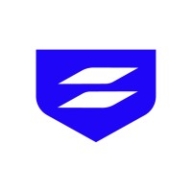


Meraki MX and Sophos XG are prominent network solutions in the security appliance category. Although both have unique strengths, Meraki MX is favored for cloud-managed simplicity, whereas Sophos XG excels in detailed security features like web protection and control.
Features: Meraki MX offers cloud-based management, SD-WAN capabilities, and robust remote access options. It simplifies setup with its centralized dashboard and provides automatic updates. Sophos XG provides advanced web protection, synchronized security across endpoints, and detailed application control features. Its interface enables granular management with customizable rules.
Room for Improvement: Meraki MX could enhance its flexibility in VPN configurations and reduce dependency on cloud connectivity. Its integrations and licensing could be more accommodating. Sophos XG can improve VPN reliability and the visibility of its user interface. The documentation and support could be made more accessible to users.
Ease of Deployment and Customer Service: Meraki MX impresses with seamless deployment through its cloud platform, reducing on-site needs and offering highly rated customer support. Sophos XG, while requiring more on-premises expertise during installation, offers comprehensive features post-deployment. Sophos customer support is adequate but doesn't match Meraki's praise.
Pricing and ROI: Meraki MX is generally pricier due to its cloud-managed nature, presenting a streamlined user experience that many find cost-justifiable, offering significant ROI by lowering administrative burdens. Sophos XG is competitively priced with flexible licenses, offering a budget-friendly choice for enterprises seeking security without high costs. Both offer value, with Meraki focused on management ease and Sophos on security depth.
Clients are now comfortable and not wasting productive hours on IT support.
The automation part is giving us a cost benefit and speed; we can react faster.
It's a very useful tool to mitigate and protect your enterprise.
The graphical interface of Sophos XG simplifies configurations, saving time in support and troubleshooting compared to the Linux-based solution I previously used.
We purchased endpoint security for the first time last year, and even without endpoint security, it provides comprehensive security.
It's good, but I would still say it's higher by about 10-15 percent compared to other market products with similar configurations.
They offer very accurate solutions.
The quick resolution of issues with Fortinet FortiGate is due to the support of the company and the fact that the equipment is easy to work with.
I would rate the technical support for Fortinet FortiGate a ten out of ten.
When we raise a ticket with Meraki MX, they instantly become available to support us for configurations or troubleshooting.
Cisco's TAC support for Cisco Meraki MX is excellent because no other OEM provides support at this level.
They are professional, respond quickly, and help resolve issues effectively.
I rate the technical support a ten out of ten.
Their team was quick to diagnose and resolve the problem by exchanging the equipment within two weeks.
They scale up really well from smaller models like the FortiGate 40 and 50 to bigger sites with the FortiGate 100 for more throughput - up to enterprise datacenters.
The variation comes in terms of the interfaces and throughputs, but from a security perspective, you get the same benefit, irrespective of whether you have an entry-level unit or an enterprise.
We determine sizing based on multiple factors: number of users, available links, traffic types, server count, services in use, and whether services will be published.
When you have hundreds of thousands of people it is very difficult to scale in Meraki.
We have Juniper solutions, and I would say the Juniper solutions can scale better, however, this solution is still very scalable.
You can scale up to multiple firewalls with centralized management.
You can't upgrade memory or storage on a specific model, which limits scalability.
I rate the scalability a nine out of ten.
We're experiencing 99.999% availability consistently.
I would rate the stability of Fortinet FortiGate a ten out of ten.
Currently, we are experiencing a general outage of one of the main internet service providers of the Dominican Republic, and we have not been impacted in our operations because with SD-WAN, we have another internet service provider and we are working with the second WAN connection without any disruption.
There have been no outages, no stability issues, and we have not found any vulnerabilities during security audits.
Sophos XG is very stable, even when serving as a DHCP server.
Sophos XG is resource-greedy, affecting performance even on newer computers.
It's on 24/7 and has consistently been reliable over the years.
Investing in a solution that can accommodate such growth would be more cost-effective than repeatedly purchasing new hardware.
While Fortinet claims to offer a comprehensive network solution, it falls short in addressing computer application issues, particularly server security.
When considering Sophos XG, which we also use, the logging and reporting functionality is notably more efficient.
It should automatically remediate and find out the issue and then resolve it on its own without interrupting the work of the employees.
Data is the only path, so optimization is essential.
An improvement would be to use Cisco Meraki MX as a software solution as well, which might reduce the cost.
The solution should have the ability to be up to date with the most recent threats.
This suggests a vulnerability that needs addressing to ensure administrators can update patches without losing access.
Business cannot stop just because of issues with support.
Last year, I renewed the support for three years, which can sometimes be expensive but depends on the security benefits and how it helps us.
It offers cost savings as it is generally cheaper than the competition.
It is about 20% cheaper.
I get it for $25,000, a device that can connect up to 75-100 users, whereas in Meraki MX, it goes to 75,000-80,000 per access point.
The price could be reduced by around 30% to make it more comfortable.
In terms of pricing, I would say it is not the cheapest, but it was comparable to the others.
I rate the pricing a ten out of ten.
Currently, it costs about four million shillings in Kenya.
The cost depends on the package you are in, such as full threat management or basic.
In terms of security, we have not experienced any security flaws or loopholes, and it has proven to be quite stable.
FortiGate has helped reduce the risk of cyberattacks that might disrupt our client's production.
These features help reduce our downtime, manage the ISPs, and deploy SLAs for all the website traffic.
Meraki MX is among those top solutions in their exceptional approach towards VPN-less, Zero Trust client access to office private networks.
We understand that Cisco solutions are very reliable, and we really like the simple management.
Since cybersecurity is my main concern, this type of miscommunication relating to vulnerability blocking is crucial.
I particularly like the visibility it provides into network traffic, allowing us to identify and address issues efficiently.
The firewall feature of Sophos XG has been the most effective for threat prevention.
Integration with endpoint security products ensures seamless traffic flow and rule enforcement, even when endpoints are not directly connected to the firewall.
| Product | Market Share (%) |
|---|---|
| Fortinet FortiGate | 20.4% |
| Sophos XG | 9.6% |
| Cisco Meraki MX | 3.5% |
| Other | 66.5% |



| Company Size | Count |
|---|---|
| Small Business | 350 |
| Midsize Enterprise | 130 |
| Large Enterprise | 187 |
| Company Size | Count |
|---|---|
| Small Business | 42 |
| Midsize Enterprise | 17 |
| Large Enterprise | 16 |
| Company Size | Count |
|---|---|
| Small Business | 140 |
| Midsize Enterprise | 50 |
| Large Enterprise | 37 |
Fortinet FortiGate excels in providing integrated VPN, firewalling, and Unified Threat Management (UTM) with centralized management and high availability. It supports remote access and comprehensive threat protection, making it a preferred choice for securing networks.
Fortinet FortiGate offers a robust security platform with features such as strong intrusion prevention, application control, and web filtering. Its integration with Active Directory and SD-WAN functionality provides scalable solutions for large networks. Users appreciate its ease of use through centralized management interfaces, ensuring robust security with flexible configurations. However, FortiGate could enhance its graphical interface and technical support responsiveness, address firmware bugs and costly licensing, improve logging, integrate better with third-party tools, and strengthen scalability and memory for log storage. Complexity in configuration and the need for intuitive features are noted challenges, and there's a demand for advanced security, zero-trust capabilities, and AI integration.
What are the key features of Fortinet FortiGate?Fortinet FortiGate is widely implemented across industries like education, finance, and government. Companies use it for firewall protection, VPN, and SD-WAN capabilities, ensuring secure perimeter and data center security. It facilitates remote access management and traffic routing optimization, offering reliable security and connectivity solutions.
Cisco Meraki MX offers cloud-managed security with user-friendly setup and efficient management, enhancing VPN and firewall functionalities for businesses.
Cisco Meraki MX is known for its robust cloud-based network management, featuring AutoVPN, SD-WAN, and advanced security. Its centralized control over firewall, traffic shaping, and monitoring ensures excellent connectivity and security. The interface allows easy management by non-technical staff, offering remote access and seamless network performance through real-time alerts and troubleshooting. It supports global connectivity with minimal effort, addressing needs across small to enterprise environments. Despite its strengths, users point out areas needing improvement like load balancing, VPN features, more flexible logging, and session capabilities. Pricing, integration limits, and licensing need enhancement.
What are the key features of Cisco Meraki MX?In industries like retail, finance, and education, Cisco Meraki MX provides enhanced security and connectivity. Retail chains benefit from easy VPN setups for secure multi-site networking, while educational institutions find value in its ability to manage large campuses efficiently. Financial services leverage its robust security features to protect sensitive data, ensuring compliance and trust.
Sophos XG provides robust security capabilities, offering features like web filtering, VPN, and user-friendly management. Its intuitive setup and policy adjustments enhance security while synchronized endpoint protection ensures comprehensive defense.
Sophos XG is a network security solution with web and application filtering, VPN features, and a management interface that simplifies configuration. It offers email protection, threat prevention, and reporting capabilities, all contributing to a comprehensive defense strategy. Synchronized security with endpoints enhances protection, and advanced threat protection with efficient bandwidth management supports secure remote work environments. However, users suggest improvements in log interfaces for real-time actions and better email protection. Enhancements in link load balancing, RAM, VPN stability, and central management are needed. HTTPS filtering, certificate management, technical support, and scalability of the SD-WAN feature can see advances.
What are the key features of Sophos XG?In industries such as healthcare, education, and financial services, Sophos XG acts as a mainline defense for network security, VPN connectivity, and web filtering. It supports secure remote access, intrusion prevention, antivirus scanning, and secure web gateways integrated with endpoint systems, tailoring its extensive security capabilities to meet specific industry requirements.
We monitor all Firewalls reviews to prevent fraudulent reviews and keep review quality high. We do not post reviews by company employees or direct competitors. We validate each review for authenticity via cross-reference with LinkedIn, and personal follow-up with the reviewer when necessary.